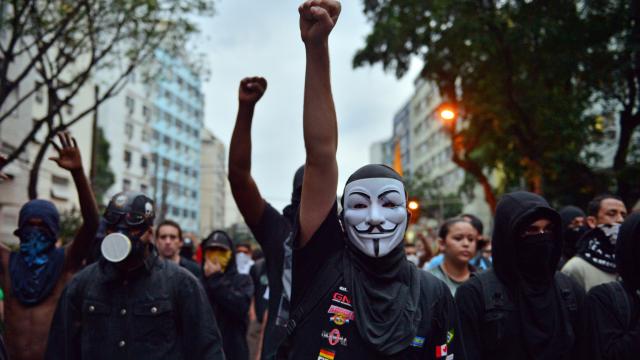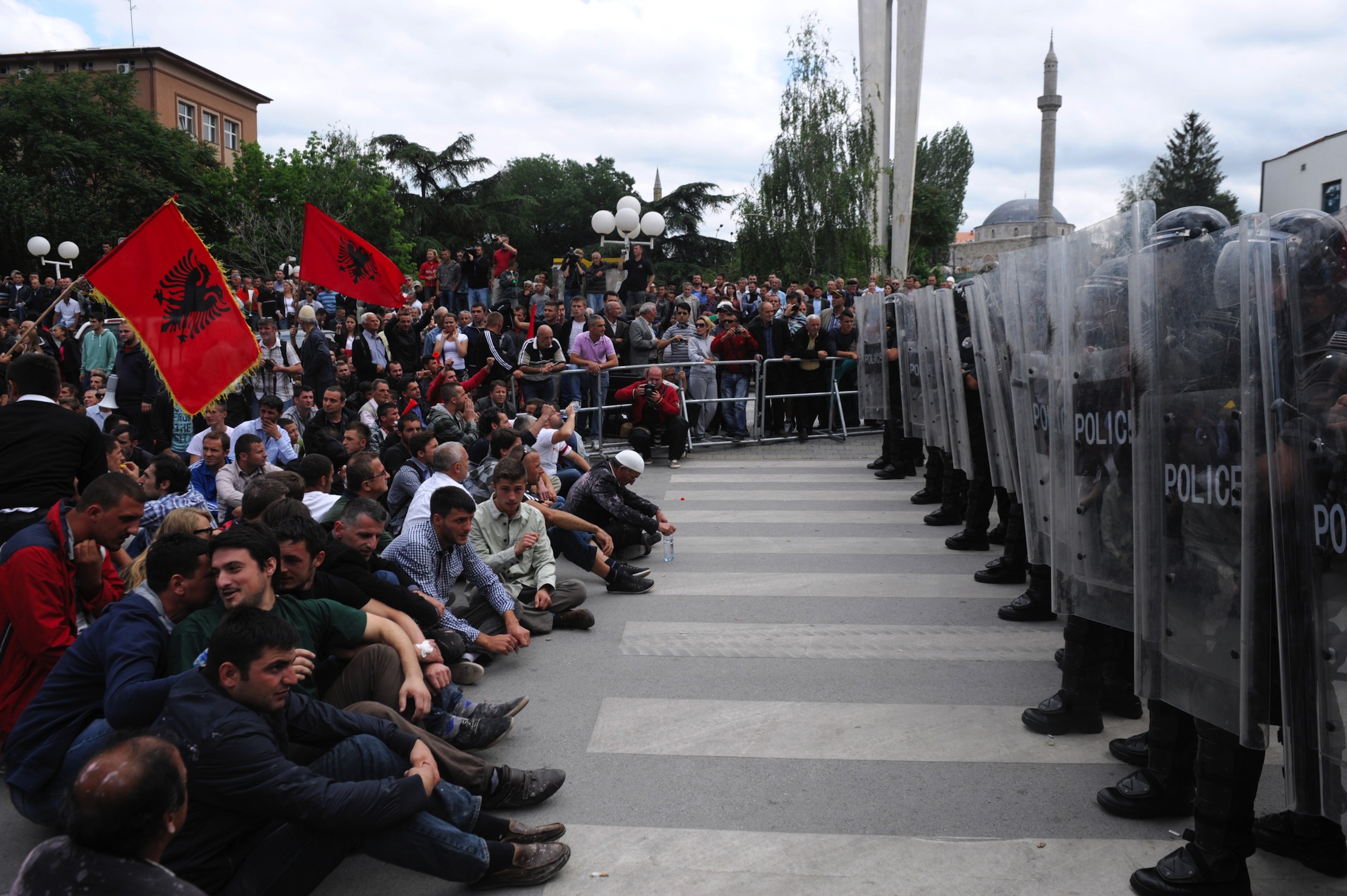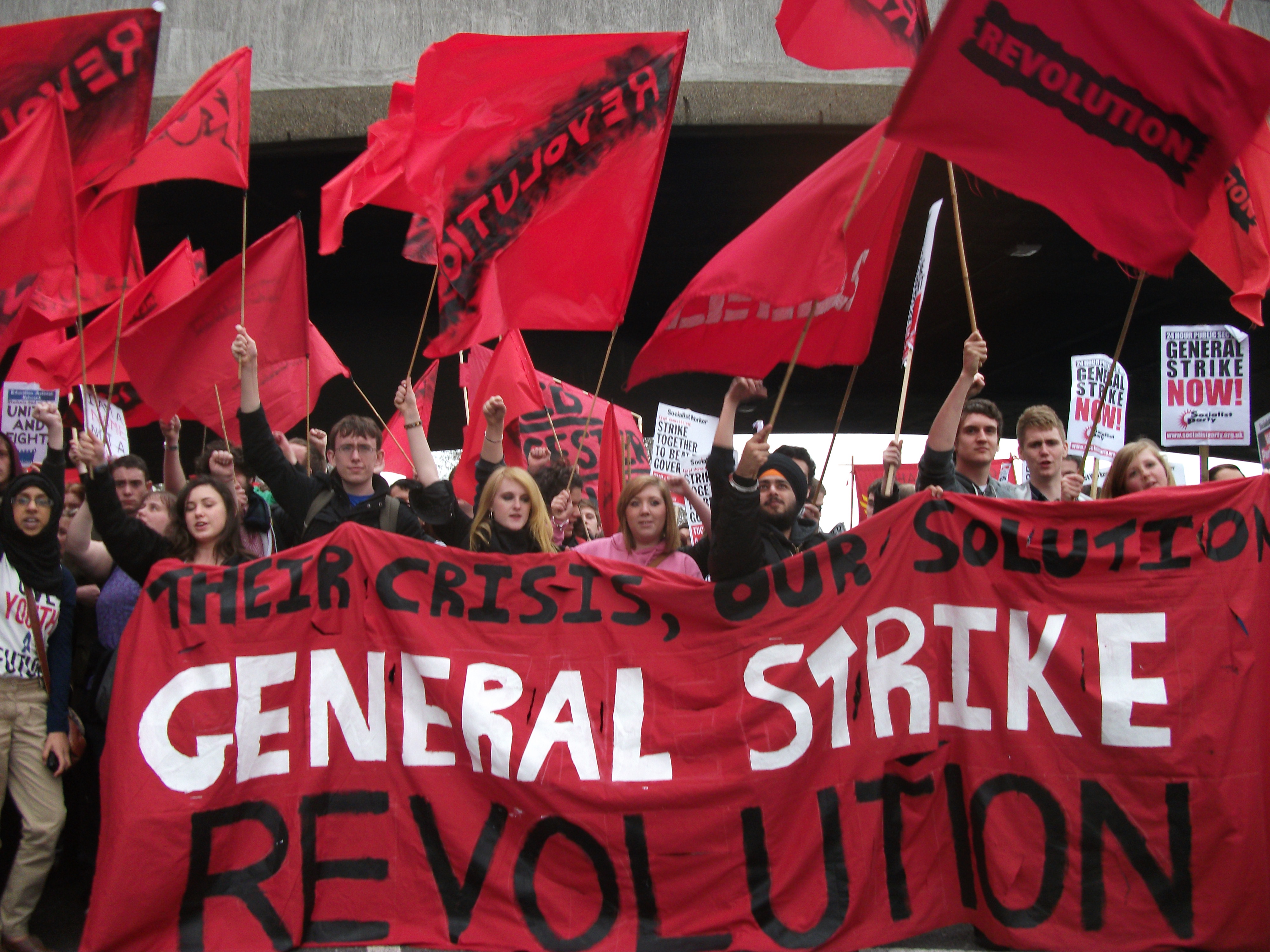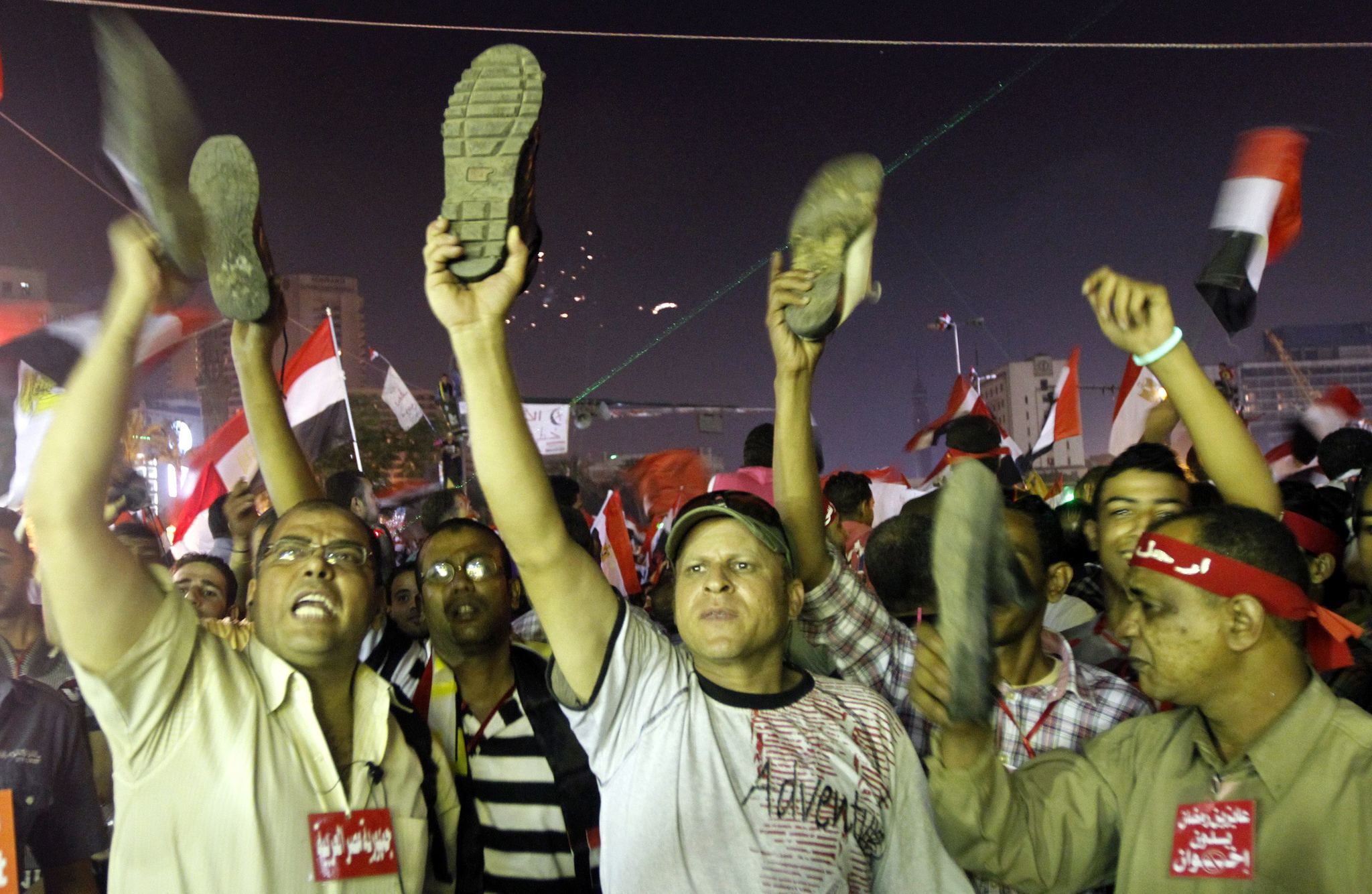
Two years after the beginning of Arab Spring, while the struggles of 2011 continue in different forms, a new series of protests appears on the globe: Turkey and Brazil. Those who thought that the new democratic movements would disappear as fast as they arose are now proven wrong: Her Yer Taksim, Her Yer Direniş – Everywhere Is Taksim, Everywhere Is Resistance, is the slogan that reminds us that there is no back to "normal" yet. Moreover, there won’t be. We have entered a new historical situation and it has little to do with what the generation of those now 15 to 45 years old had to accept, up until recently, as “normal” political and everyday life.
The end of history has come to an end. When Francis Fukuyama announced "the end of history" in 1992, he simply meant that there was no alternative to liberal capitalism – forever. It did not take “forever” for this narrative to be challenged as bourgeois ideology. The Zapatistas did so in 1994, the globalization movements did so in Seattle in 1999 and in Genoa in 2001.
At the same time, the end of history characterized an undeniable reality. And it was precisely in its critique that this reality was confirmed. At no other point in history could the slogan “Another world is possible” have drawn people into the streets. While in other historical moments, the dominant question was "Which possible world is the most necessary and most desirable?", the question during this time was whether there was any alternative to the existing world at all. The end of history marked a reality in world history that arose after the collapse of the Soviet Union, which was validated again 10 years later with 9/11. This reality changed the key motifs with which competing politics tried to legitimize themselves. The hope for a better future was replaced by the fear that the present would become worse. And this present, which continuously degraded the lives of the majority, would expand, it seemed, forever.
Now the end of history is itself history. Seen from the future that has already started, this historical era will have begun in 1991 and will have lasted exactly 20 years until the Arab Spring. As if history were shrewdly trying to find the most effective stage for a comeback, its return has taken the beginning, of all places, in that region of the world that both colonialism and the new world order have deemed ahistorical, or backwards at best. TV journalists from the northwest of the world stared at the pictures of revolutions accelerated by communication technology in Tunisia and Egypt and recognized themselves in the activists on-screen: “They” looked like “us.”
As in the other big twentieth-century revolutionary cycles – 1917, 1968, and with restriction 1989 – the 2011 revolutions moved from city to city and from region to region, crossing state borders. Like its antecedents, this cycle also started in the periphery of the global order and advanced more or less successfully to the "heart of the beast." From Sidi Bouzid to Cairo and further on to Bengazi, Daraa, Al-Manama, and Sanaa; to Athens, Madrid, Tel Aviv, London, Santiago de Chile and Wisconsin; to New York, Frankfurt, Oakland, Moscow and then Istanbul, Ankara, Sao Paolo, Rio de Janeiro.
In some places – for instance, Tunisia, Greece and Turkey (especially with the struggles of the Kurds) – many years of strike and protest movements preceded the current events. Nonetheless, each of the current insurrections was unexpected, some more so than others. This is certainly true for the Arab countries, where for the past decade the attempt has been to teach democracy by means of war. This is also true for Israel, where every political and social question has been overdetermined and more or less effaced by the persisting war. This is also true for the US, which has not seen such great emancipatory protests since the 1960s. And it is of course true for Russia, virtually the homeland of posthistoire, where the autocratic tradition of tsarism has made any thought of participation seem as futile as dangerous.
Even after two years of rebellions the whole world was—again—surprised when Gezi Park got occupied and a Brazilian mass movement fought for social change. None of these uprisings were predictable – at least no-one bragged retrospectively to have predicted them. But revolutions in general raise not only the question of their predictability but also of their recognizability once they have started to begin.
The uncertainty of so many spectators about whether the processes they were watching on TV really qualified as “revolution” is not without historical antecedent. Oftentimes, and probably because it is nicer this way, revolutions have been identified where they did not occur, though the reverse delusion is recorded as well. One month before the Russian February Revolution, Lenin predicted: “We, the old, will possibly not live to see the decisive battles of this upcoming revolution.” And Shlyapnikov, the leading Bolshevik in Petrograd, said even after the arrival of this “upcoming revolution,” on February 27, 1917: “We have no revolution and won’t have a revolution any time soon. We have to adapt ourselves to a long period of reaction.” It is precisely in their unlikeliness that we find a first commonality between these various rebellious movements of 2011. Generalizing this criterion of unlikeliness alone, a revolutionary moment might—paradoxically—be likely even in Germany.
Antagonism and Difference
The plurality of historical possibilities inherent to revolutionary situations makes it difficult to understand them. A revolution’s unambiguous course often only emerges in hindsight. But this unambiguity is also an effect of a homogenizing historiography that is fabricated not least by those revolutionaries who were able to institutionalize themselves as victorious.
Even the first victorious socialist revolution, Russia 1917, could not live up to the repeated claim for a straightforward trajectory or at least clear-cut demands. The Bolsheviks, for example, due to whom the revolution became known foremost as the “October revolution,” were a little known faction at the outset of the revolution. Even their most basic slogans, like “Land and Freedom,” were understood in countless different ways. For instance, the peasants ended up using them in ways unintended and unexpected by the "authors": they simply took the feudal land by force and – without any state needed – declared it their rural common.
Such irregularities occurred despite the fact that the communist party, which emerged from the revolution as the apparent victor, had its heart set on eliminating political ambiguity in favor of a clear party line – with terrorist methods and counterrevolutionary effects. Maybe there is a specifically Leninist reduction of revolution embodied in such a belief: that the manifold polyphony of revolution must be silenced on behalf of a logic of decisiveness and must have a unified voice embodied by a party line, a central committee, and a leader. Hence, the ambiguity of the current revolutions is neither a postmodern novelty nor something that we should too hastily wish to disappear – even though it might be confusing and potentially threatening to see the flags of Russian ultranationalists next to LGBT rainbow flags and anarchist banners at anti-Putin demonstrations, or Turkish nationalists marching next to Kurdish leftists, feminists and "Anticapitalist Muslims" in Istanbul. Maybe the assigned task of a revolutionary politics is neither to see an antagonism in every difference, nor mere differences in real antagonisms.
Revolution and Reaction
The Russian revolutionaries from 1917 were convinced that they could only succeed if the revolution would spread to the entire capitalist world. They set all their hopes on Germany, and were let down. Today Germany plays an important role once more: the role of a counterrevolutionary center (that befits it so well historically). With its politics of deflation and low wages, hard currency and cheap exports, Germany has both contributed to the crisis – which it now worsens by enforcing austerity measures – and simultaneously profits from it (which is why “Blockupy Frankfurt” is so important: to demonstrate that the German export of crisis also leads to an international import of protest).
Today, again, the success of the revolutions will depend on their ability to dynamize and radicalize each other. As different as the conditions of the movements are, their references to each other are obvious: digital mobilization, occupying of public squares – Tahrir Square, Plaza del Sol, Syntagma Square, Liberty Square, Taksim Square – non-violent protest if possible, and anti-state positioning.
Above all, these revolutions all are characterized by a radical democratic organization that often excludes centralized institutions like parties, while including a claim for social – that is to say, political and economic – democratization. The global character of the revolutionary movements has become visible when demonstrators in Egypt carried banners showing their solidarity with the striking workers in Wisconsin; when Taksim solidarity demonstrations and even camps appeared in New York as well as in Athens and Berlin. One group thus teaches the other new forms of protest and organization. At the same time, the group may learn precisely from the fact that another group adopts its strategies – and that the overthrowing of a dictator or a military council does not yet lead to a democracy worthy of its name. Just when Egyptian protestors won freedom of the press, newspapers and public broadcasting in Greece were shut down because they was no longer profitable.
This capitalist limitation of democracy was demonstrated most clearly when the former Greek president George Papandreou announced a referendum on the bailout package enforced by the European Central Bank, European Commission, and IMF. Even though the referendum was already extortive because it asked Greece whether to remain in the European Union, it was cancelled it two days later after the prime ministers of Europe's strongest economic powers, Angela Merkel and Nicolas Sarkozy, had intervened.
Some months later, German politicians recommended postponing elections in Greece or, better still, appointing a budget commissioner who could override the Greek parliament. The request for a Gauleiter was rejected. But the imposed conditions of the enforced austerity measures were not that different in the end. The Greek government is effectively monitored by a European Commission and IMF “expert group,” and must regularly transfer money for debt redemption to a special account that it has no access to. Democracy – such is the lesson of this demonstration of power – stays limited under capitalist conditions, and ends where it could start to cause problems. That is why elected governments can be replaced by experts whose “expertise” consists of their proficiency in executing the requirements of economic necessity. Why vote when there is nothing to vote for?
Crisis and Capital
The current revolutionary movements derive their explosive nature from this situation – as harmless as they might still look, from time to time. The 2008 (2010) global financial crisis is the worst crisis since the crises of 1929 and 1974, and it is still expanding. Here, capitalism presents its unmitigated senselessness:
In the U.S. and Spain, people are forced to live in tents – because too many houses were built. In Italy, the high youth unemployment rate is lamented – and the retirement age is raised. In Germany, labor productivity increases (commodities can be produced in less time) – and overtime increases, too. In Greece, to prevent a national bankruptcy that would cause social impoverishment, social impoverishment is increased (which might nonetheless result in national bankruptcy).
However, the ruling classes cannot or are unwilling to find an exit strategy – often an indicator of imminent revolutions. While bourgeois intellectuals in Europe, like Charles Moore or Frank Schirrmacher, cry for the left to save capitalism, the US-American right argue through their propaganda channel FOX News that the bailout costs should be paid for not by multimillionaires but rather by the “50 percent poor.” These poor, it is said, are not poor, after all, since they own refrigerators. What is new here is not the moral scandal, but the ineptitude of capital failing to transcend its particular interests. That way, neither the US-American empire can be rescued nor the capitalist mode of production be reproduced.
Still, the crisis must be solved. The current revolutionary movements, like their antecedents, are threatened by their own, not least anti-Semitic, corruption. And at the same time, fascist, reactionary and Islamist movements are ready at hand all over the world. In Hungary, for example, such reactionary forces have gained great power with the Fidesz government and the Jobbik movement. In Greece, as a result of the crisis, fascists have in only two years become the third strongest party in only two years – as if history wanted to repeat itself. Reactionary solutions to the crises are, among others, sexist segregation and racist exclusion. Furthermore, and historically successful, are military Keynesianism, suppression of competition, and productive destruction of capital: this means war.
The democratic revolutions therefore must put an end to evil and prevent the worst. In its world-historical attempt to abolish domination, socialism has disgraced itself excruciatingly and with lasting effect. But now the liberal-democratic model, too, loses much of the attractiveness that, measured against the states of the Warsaw Pact, it still had twenty years ago. The eternal present of capital has ended for now. For the first time in ages, history is open again – for suggestions.
Bini Adamczak is the author of two books: Communism for Children and Past Future: On the Loneliness of Communist Spectres and the Reconstruction of Tomorrow.
3 WAYS TO SHOW YOUR SUPPORT
- Log in to post comments





















